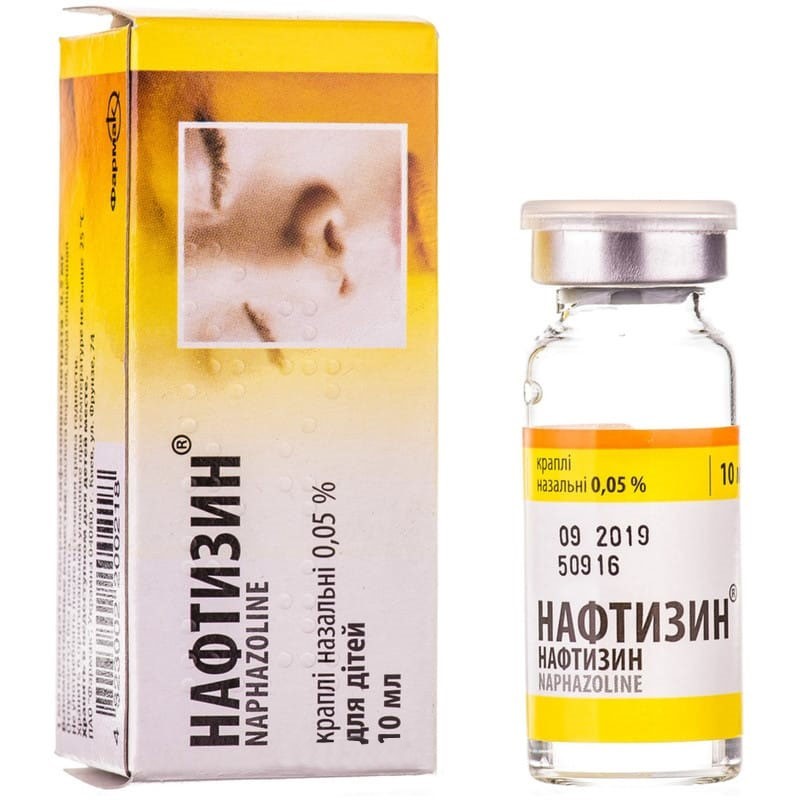



 Secure and encrypted payment processing
Secure and encrypted payment processing We ship to over 40 countries including the USA, UK, Europe, Australia and Japan
We ship to over 40 countries including the USA, UK, Europe, Australia and Japan Guaranteed refund or reship if you haven't received your order
Guaranteed refund or reship if you haven't received your ordernaphazoline has a pronounced vasoconstrictor effect on peripheral vessels due to its effect on α-adrenergic receptors. when applied to the mucous membranes it reduces edema, hyperemia, exudation, which helps to facilitate nasal breathing in rhinitis. nafazolin promotes the opening and expansion of the excretory ducts of the sinuses and Eustachian tubes, which improves the outflow of secretion and prevents the sedimentation of bacteria.
Pharmacokinetics When applied topically, naphazoline is completely absorbed.
The therapeutic effect occurs within 5 minutes and lasts 4-6 hours with intranasal use.
Acute rhinitis. as an aid in inflammation of the paranasal sinuses and middle ear.
To reduce swelling of the mucous membrane during a diagnostic intervention.
Naphthyzin should be instilled into each nasal passage, his head thrown back slightly and tilted to the right when instilled into the left nostril and to the left when instilled into the right nostril.
With a medical purpose. Adults and children over the age of 15 years: 1-3 drops of 0.05-0.1% solution in each nasal passage.
For children aged 3 to 6 years, apply a solution of 0.05% - 1-2 drops, for children from 6 to 15 years - 2 drops in each nasal passage.
Naphthyzine is used 3 times a day, but not more often than after 4 hours.
Naphthyzine should not be used for 5 days for adults and 3 days for children.
Repeatedly naphthyzin can be used only after a few days.
In case of nosebleeds, use tampons moistened with 0.05% solution of the drug.
For diagnostic purposes. After cleansing the nasal cavity, 3-4 drops of 0.05-0.1% solution are instilled into each nasal passage or a swab dipped in 0.05-0.1% solution is administered for 1-2 minutes.
In case of swelling of the vocal cords, inject 1-2 ml of the drug with a laryngeal syringe.
Hypersensitivity to the components of the drug; dry inflammation of the nasal mucosa.
Subject to the recommended doses, naphthyzin is usually well tolerated. in isolated cases, side effects occur:
from the immune system: allergic reactions, including Quinckes edema;
from the respiratory system, chest and mediastinal organs: burning and dryness of the nasal mucosa. A feeling of severe nasal congestion may occur after the effect of the drug is over.
There are systemic side effects that are provoked by irritation of the sympathetic nerves and occur mainly after an overdose of the drug:
from the nervous system: nervousness, headache, tremor;
from the cardiovascular system: tachycardia, palpitations, hypertension;
on the part of the skin and subcutaneous tissue: increased sweating.
The use of 5 days for adults and 3 days for children or very frequent use can be addictive to the drug, which is accompanied by swelling of the nasal mucosa after taking it.
Long-term use can lead to a weakening of ciliary activity and irreversible damage to the nasal mucosa, to dry inflammation of the nasal mucosa.
The drug should be used very carefully for severe diseases of the cardiovascular system (ag, IHD), for diabetes, hyperthyroidism, pheochromocytoma, ba. caution is necessary while using MAO inhibitors and other drugs that can potentially increase hell; when using anesthetics (e.g. halothane) that increase the sensitivity of the myocardium to sympathomimetics, as well as when using the drug during pregnancy or lactation.
Avoid prolonged use in adults and children. Long-term use of the drug can lead to chronic nasal congestion and atrophy of the mucous membrane.
Use during pregnancy and lactation.The use of the drug is possible only as directed by a doctor, who will determine the ratio of benefits for the mother / risk to the fetus (child). There is no information regarding the penetration of naphazoline nitrate through the placenta or into breast milk.
Children. In children from 3 to 15 years, Naphthyzin 0.05% can be used.
In children older than 15 years, Naphthyzin 0.1% can be used.
The ability to influence the reaction rate when driving vehicles or working with other mechanisms. When used in therapeutic doses, it does not affect the ability to drive vehicles and mechanisms. If you exceed the recommended doses, dizziness and drowsiness are possible.
The use of naphthyzine simultaneously with MAO inhibitors, tricyclic antidepressants and maprotiline, or for several days after their withdrawal, can cause an increase in hell.
In case of an overdose or accidental swallowing of the drug, symptoms of a systemic effect may appear: nervousness, increased sweating, headache, tremor, palpitations, tachycardia, hypertension. pallor of the skin, cyanosis, fever, nausea, cramping, heart attack, cardiac arrest, pulmonary edema, respiratory failure, mental disorders may occur. the inhibitory effect on the central nervous system is manifested by such symptoms: a decrease in body temperature, bradycardia, increased sweating, drowsiness, shock, apnea, coma.
In case of accidental overdose, stop using the drug and consult a doctor immediately. The treatment is symptomatic.
The risk of overdose increases in children more sensitive to adverse effects than adults.
In the original packaging at a temperature not exceeding 25 ° c